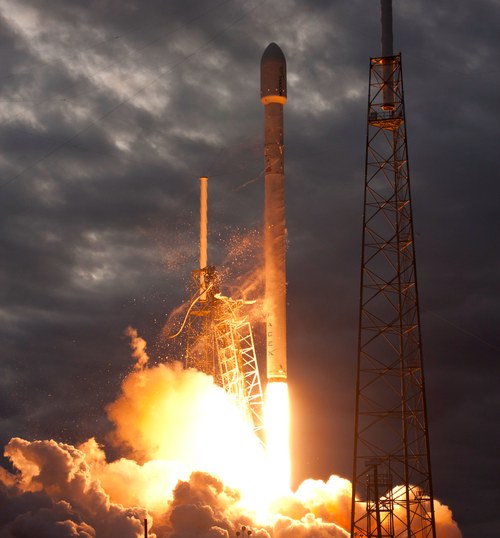
A Falcon 9 v1.1 lifts off from Cape Canaveral on January 6, 2014, carrying the Thaicom 6 satellite. (credit: SpaceX)
After the drama of the multiple scrubs in November with SpaceX’s first commercial GEO satellite launch, SES-8, yesterday’s launch went almost very smoothly—almost too smoothly. The Falcon 9 v1.1 lifted off on schedule at 5:06 pm EST (2206 GMT) Monday, at the beginning of a two-hour launch window, after a problem-free countdown. The rocket’s payload, the Thaicom 6 satellite, separated from the upper stage 31 minutes later after the second stage’s second burn placed it in a transfer orbit of 295 by 90,000 kilometers, according to a SpaceX statement.
If there was one glitch with the launch, it was how SpaceX communicated the success. As with last month’s SES-8 launch, SpaceX ended their live webcast after the second stage completed its initial burn, promising to provide updates via social media. But the time for the second stage relight, and then payload separation, passed without any news from SpaceX, leading to speculation—and concern—among those waiting for updates. Finally, more than 20 minutes after the scheduled payload separation time, SpaceX announced the mission was a success; for some reason, they were simply late in reporting the news:
Falcon 9 has successfully deployed THAICOM 6 into its target orbit
— SpaceX (@SpaceX) January 6, 2014
The launch is a success for SpaceX beyond the mission itself. It is the third consecutive successful launch for the Falcon 9 v1.1, a major milestone towards being certified by the US Air Force to carry military payloads. However, as of last month the Air Force had not yet confirmed that the 1st Falcon 9 v1.1 launch, in late September, was indeed a success. That launch suffered a failed relight of the second stage, but that was not needed for that particular mission.
The next Falcon 9 launch, tentatively scheduled for late February, will be SpaceX’s third Commercial Resupply Services (CRS) mission to the International Space Station for NASA. That launch may be the next opportunity for SpaceX to test the potential recovery and reusability of the Falcon 9’s first stage: in October, SpaceX president Gwynne Shotwell said they would not try to recover the stage, as they attempted on the first Falcon 9 v1.1 launch, on its upcoming two GEO missions in order to maximize the performance of the rocket for those missions.

Leave a Reply